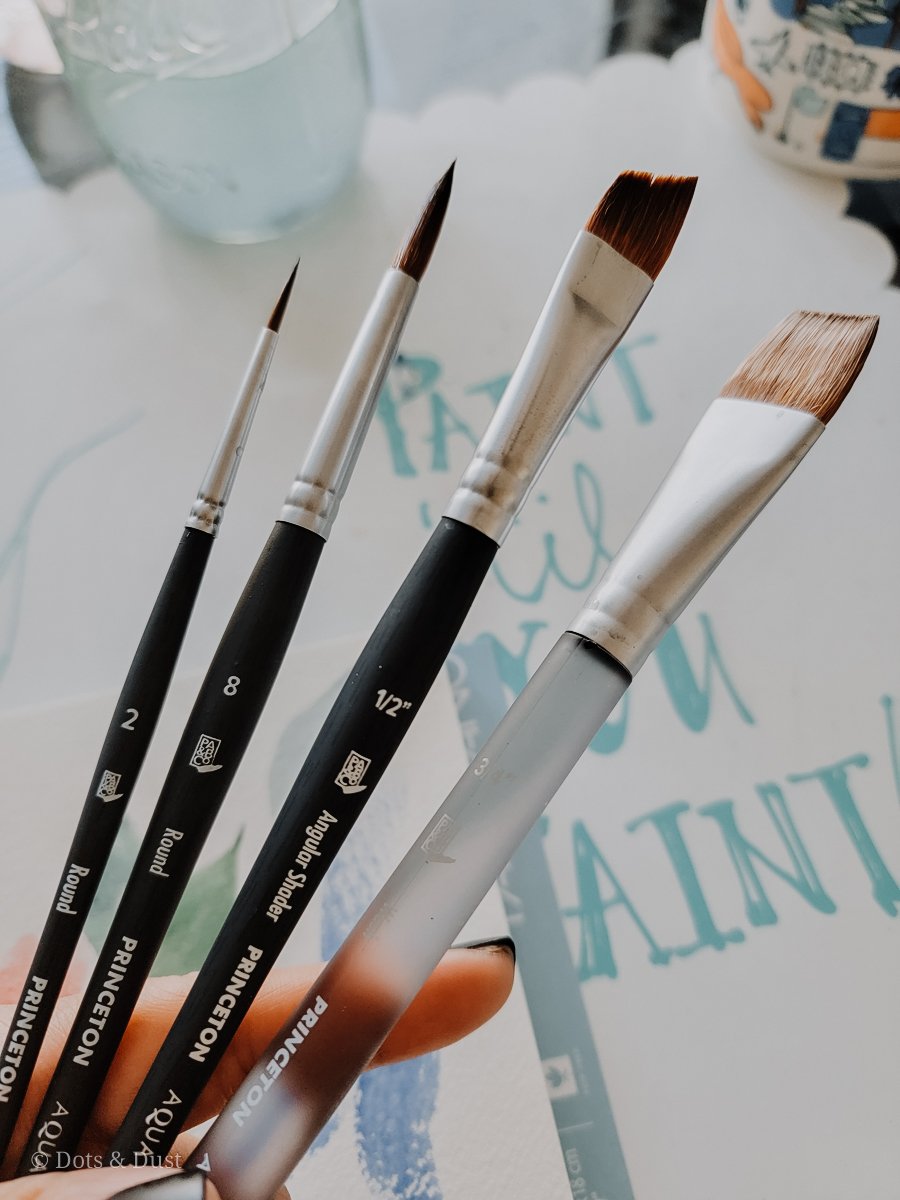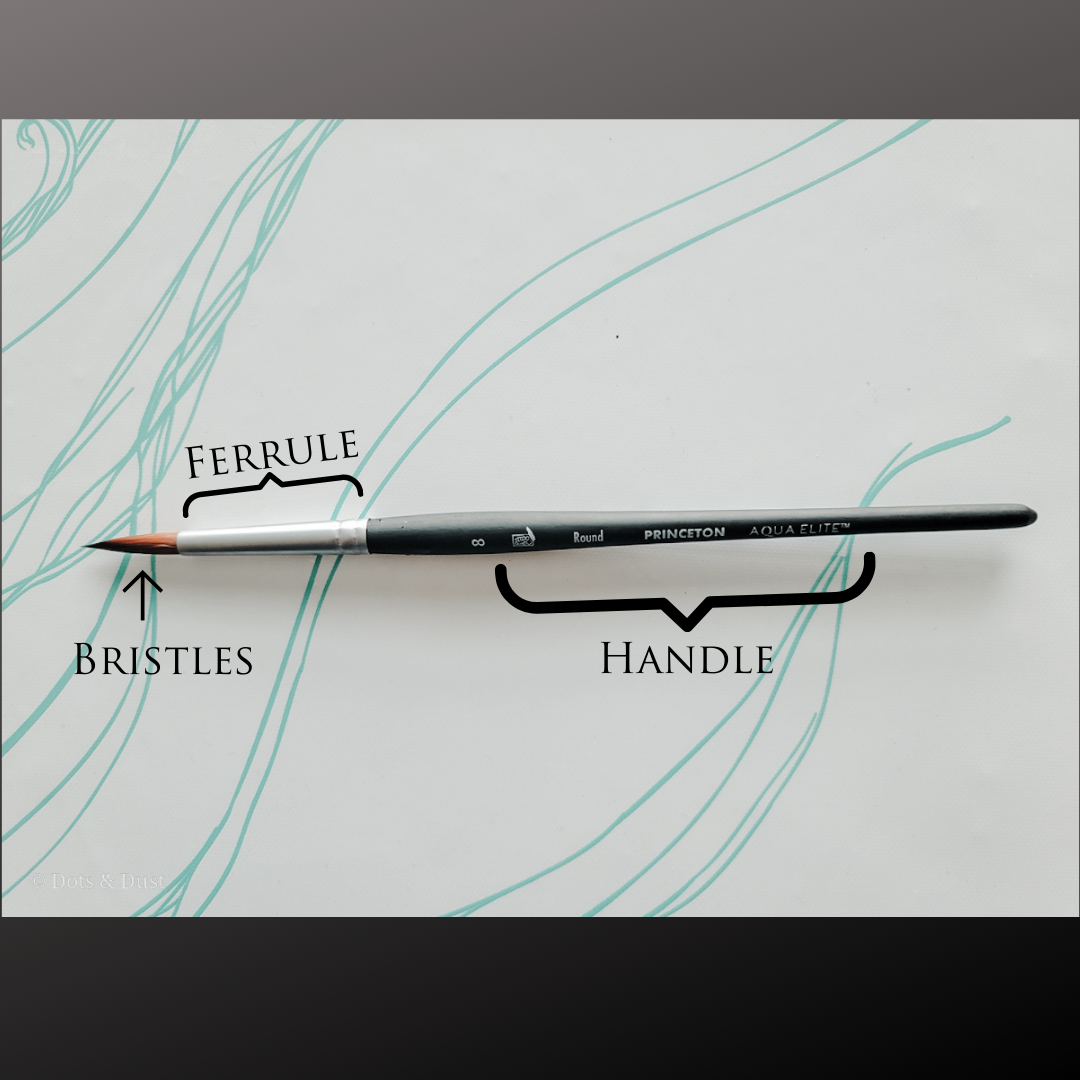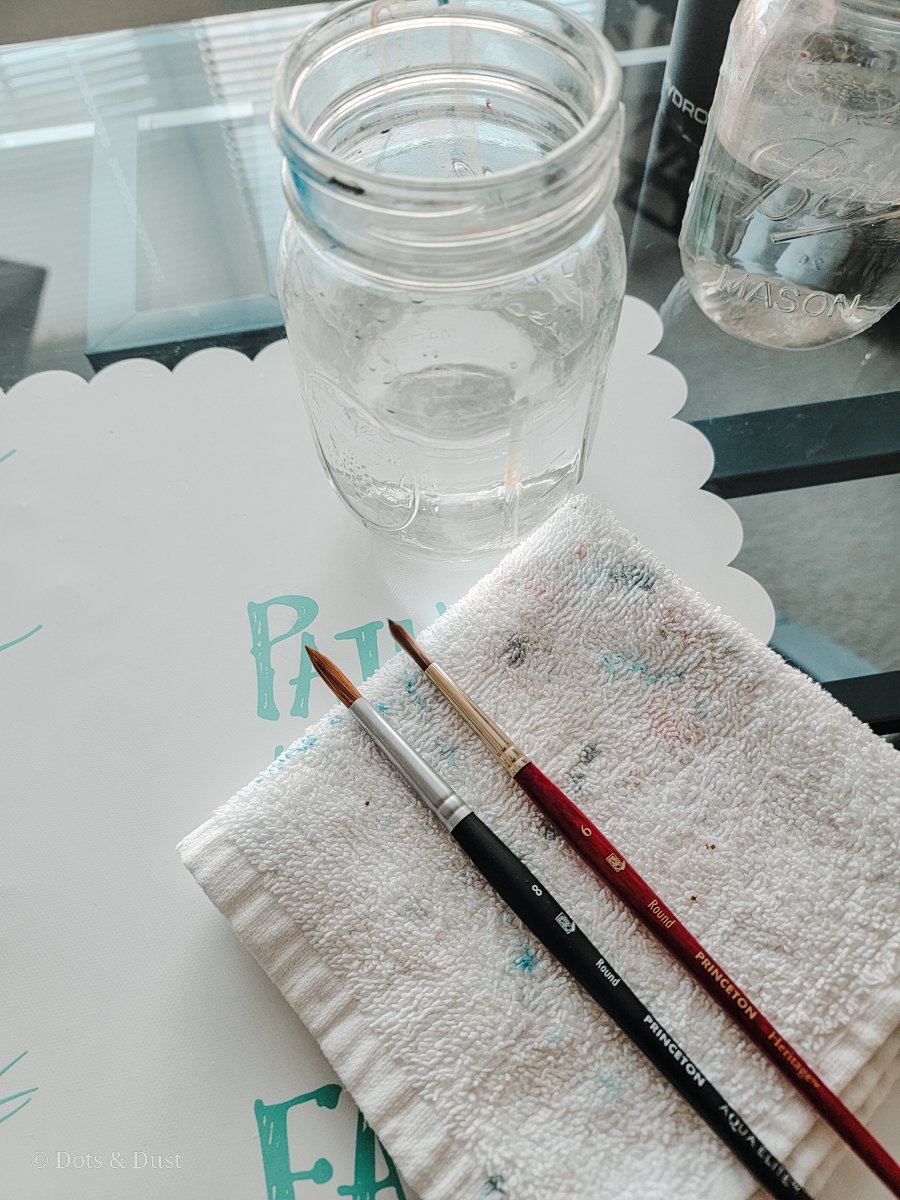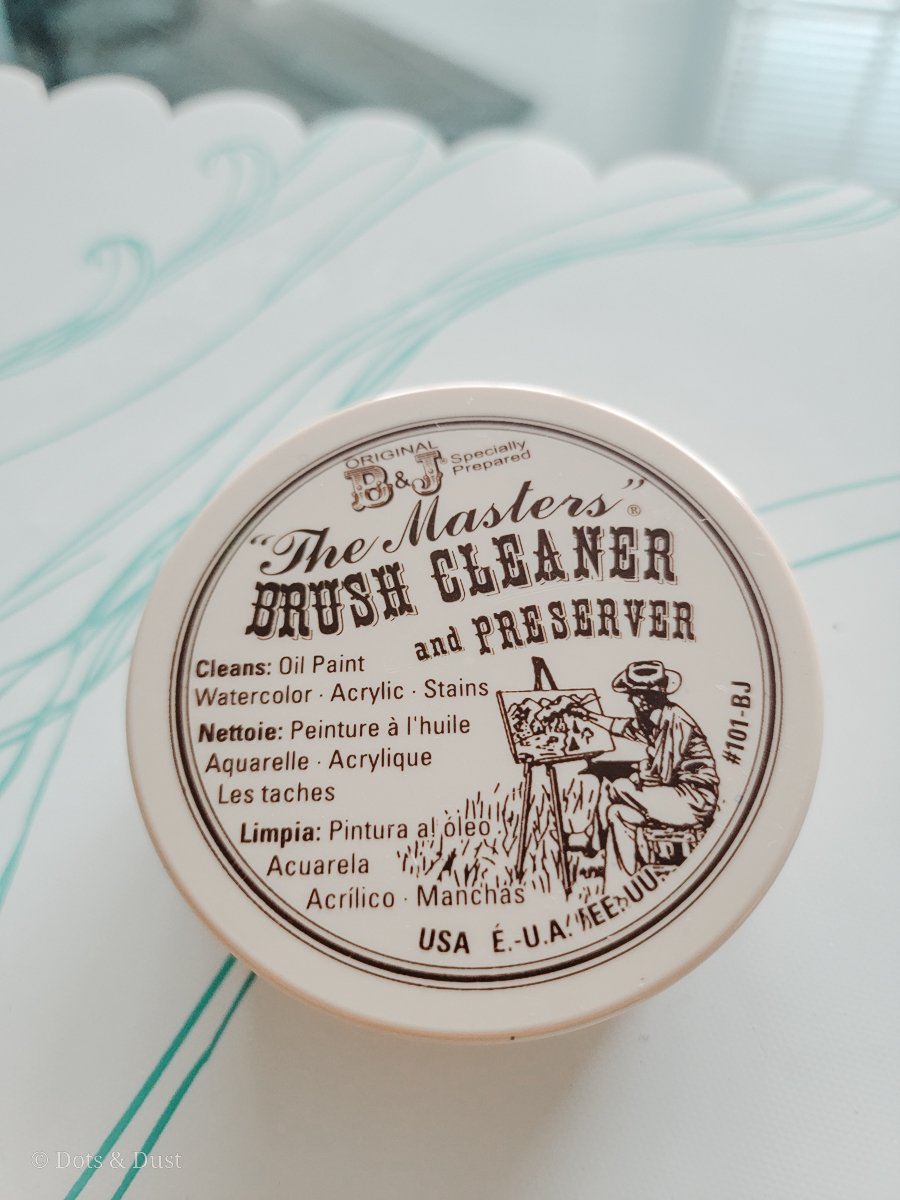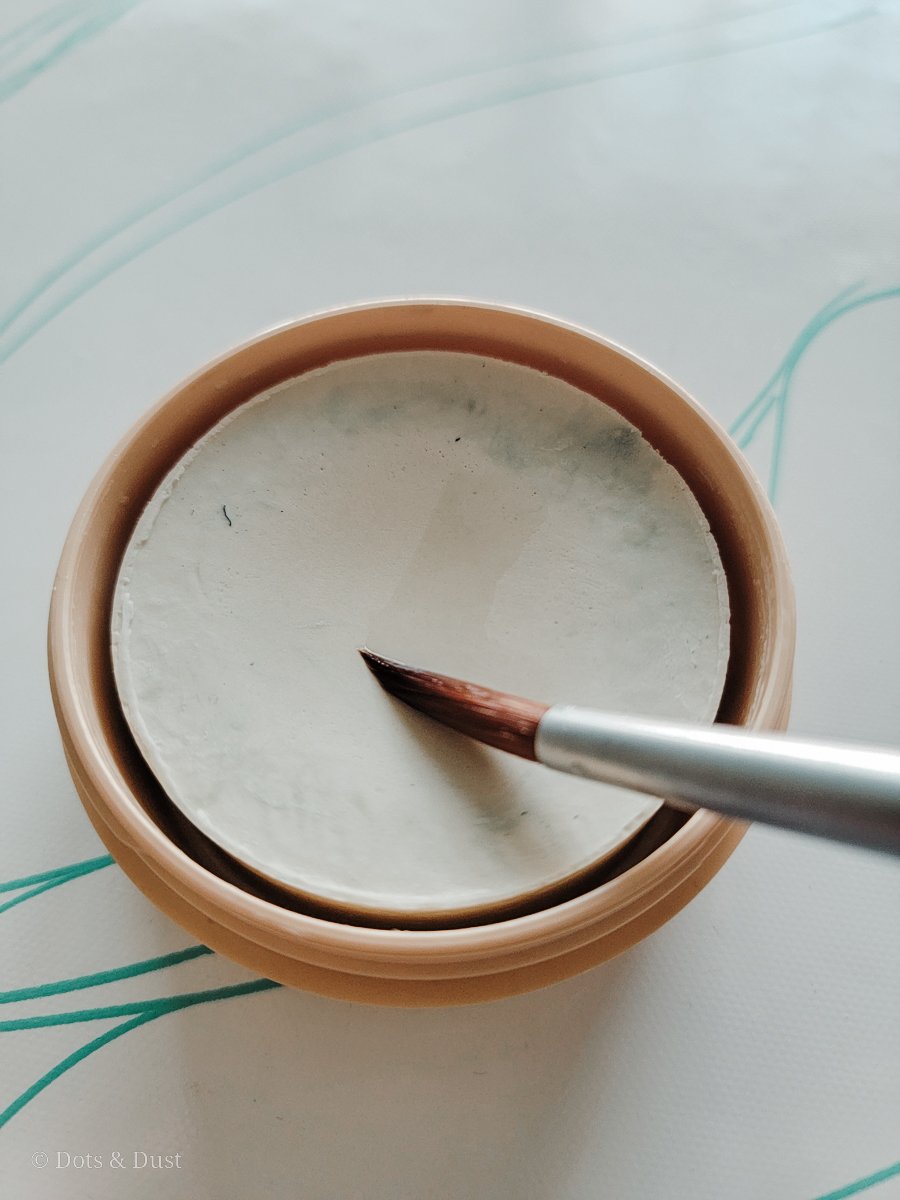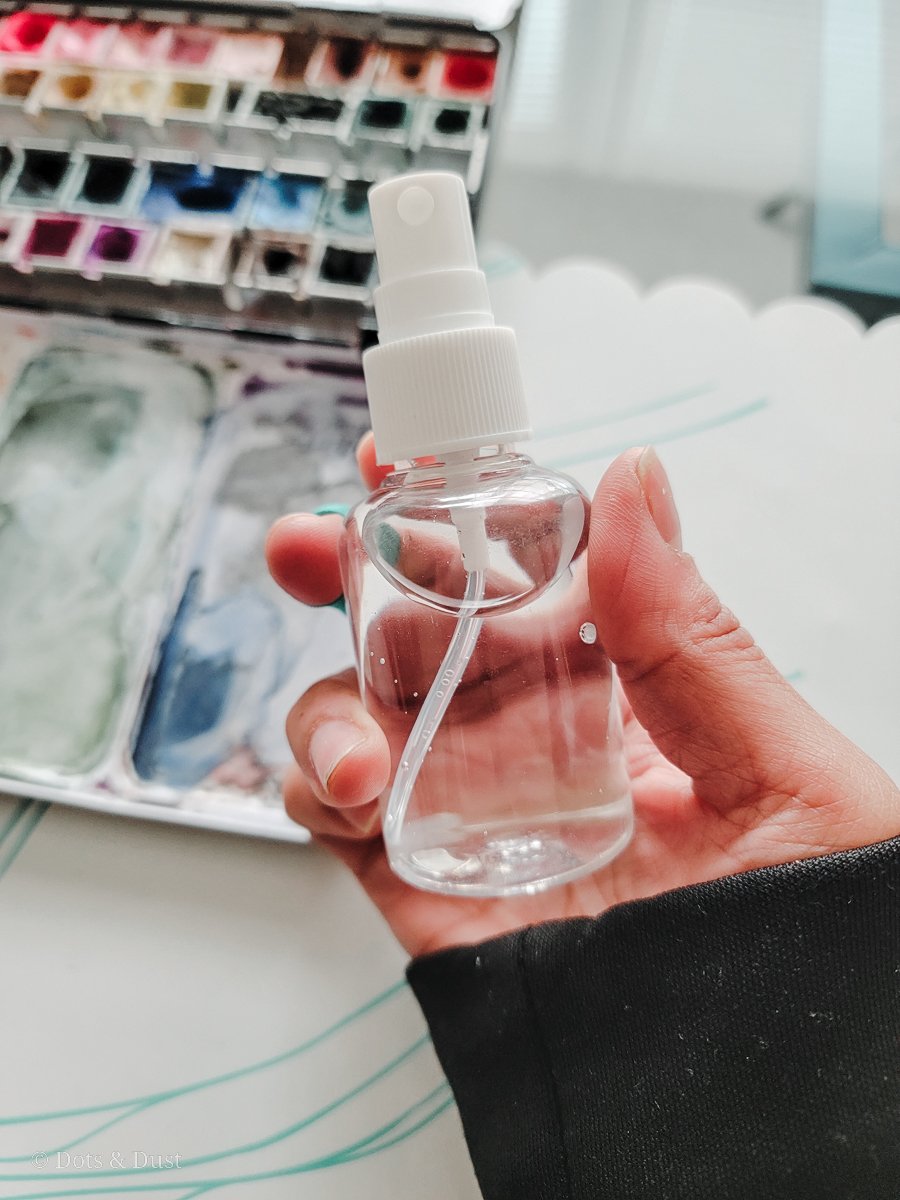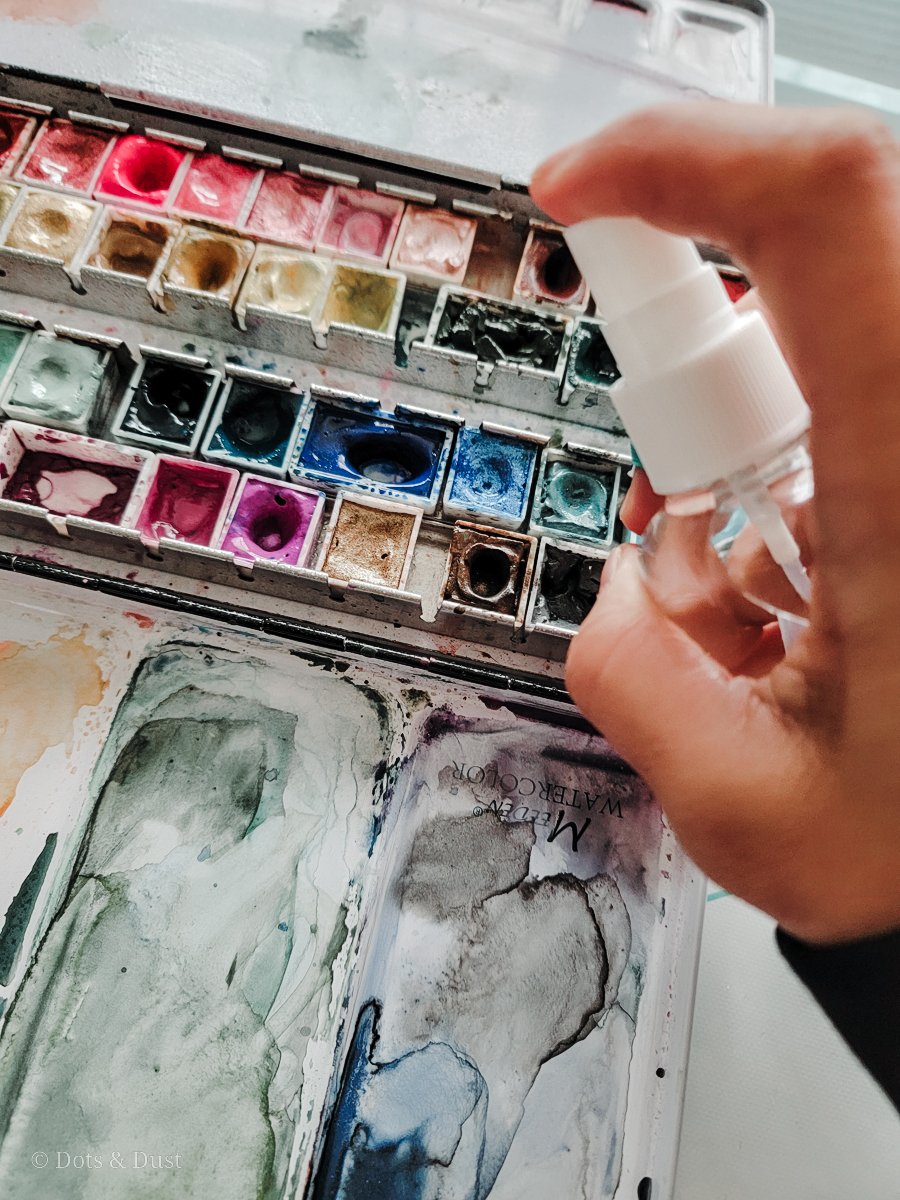How to Clean & Take Care of Your Watercolor Brushes
Disclosure: This post may contain affiliate links, meaning, at no additional cost to you, I will earn a commission if you choose to click through and make a purchase.
Imagine this.
You have all the ideas. The creative muses are singing to you and you just can’t wait to start painting.
You grab your paintbrush, dip it into your water jar, and then eagerly into your watercolor paint. And as you begin to paint that gorgeous flower on your mind, it happens.
A small hair from your brush has fallen into the petal you just painted. You shrug it off, carefully pick out the small hair, and keep painting.
But it happens again. And again. And now you can feel the annoyance within you start to rise.
Why is this happening and how can you avoid it?
Simple. It’s time to take brush care and maintenance seriously.
I know you. You probably spent a pretty penny on that paintbrush and you want to make sure that it lasts a long time.
Well, have no fear because I am about to lay down some “paintbrush truths” that every artist (beginner or intermediate) needs to hear.
Here are my top five tips on taking care of your brushes:
#1…Never, EVER leave your paintbrush sitting in your jar of water
Let’s quickly talk about the anatomy of a paintbrush.
Your paintbrush is comprised of the handle, the ferrule, and the bristles. Inside the metal ferrule is a glue that keeps the hairs of the bristles in place.
If you continually leave your brush sitting in water, over time the water will seep into the ferrule and break down the glue holding the bristles in place. As a result, you will start noticing the hairs of your brush come out of the ferrule and onto your pretty works of art.
SUPER HUGE pet peeve of mine. So avoid it at all costs.
Also, the water can break up the glue that is keeping the handle attached to the ferrule. And that can also detach and completely ruin your brush.
#2…When you are done painting for the day, ALWAYS rinse out your brushes.
Whenever I know that I am done painting for the day, I will dump out my jar of dirty water, fill it with clean water, and rinse off the brushes I used that day.
To do this, start by swirling your brush back in forth in the clean water. Then press the bristles down on its side at the bottom of the water jar a couple of times. This helps knock out and remove most of the pigment that is sitting in your brush.
Lastly, take the brush out of the water and dab it gently onto a clean paper towel or a cloth. If you use round brushes often, then what you want to do is roll the bristles on the towel a bit to help keep those hairs together.
While the bristles are still wet, shape the bristles with your fingertips.
Listen to me when I say this. It is VITAL that you shape them back to their original form before the bristles dry. If you are like me and use a round brush 90% of the time, then you want to make sure that your paintbrushes continue to have that nice sharp tip that gives you your thin lines. Misshapen brushes or stray hairs that are not placed back into place while wet can cause stray marks on your paper the next time you paint.
Never good, for sure.
#3 Let your brushes fully dry on their sides
I have seen it many times. People will rinse out their brushes and then immediately place them with the handle down into a cup or jar for storage.
As this is perfectly fine once the brushes are fully dry, it is not recommended while the brush is still wet. Again, what happens is that the water will seep down into the ferule, break down the glue, and eventually release the bristles.
So after rinsing or cleaning, always let the brushes rest on their sides to dry.
#4 Once a week, do a deeper clean of your brushes with a mild soap
I will be the first to admit that I forget to clean my brushes every week. But in reality, it is the best thing to do to extend the life and performance of your paintbrushes.
If you are on a budget, take your brushes and rinse them out in warm (not hot) water. Squirt a small amount of mild soap in the palm of your hand and swirl the bristles in the soap to remove any pigment. Rinse and repeat as necessary.
If you want to splurge a little bit, you can purchase this General Brush Cleaner & Preserver. Rinse your brush in clean water then swirl the bristles in the cleaner. Rinse and repeat as needed.
What I also adore about this one is that it acts as a brush preserver as well. If you are having a brush that is stubborn and doesn’t want to be molded to its original shape, than this will help. Dampen your brush and then just coat the outside bristles in the same cleaner. Shape your brush with your fingers and then lie the brush on its side to dry. The preserver will harden and keep the bristles in their place. Just make sure to rinse off the preserver well before you paint with the brush next time.
#5 Always spray water on your watercolor paints & let them sit for a few minutes before you start
Now you are probably wondering, “What in the world does this have anything to do with the care of my paintbrush.”
This last tip actually pertains to anyone who is using dried watercolor paint or those that are found in pans. When you spray water on top of your dried paint and wait five minutes before painting, it gives the water time to break down the watercolor. This will prevent you from scrubbing your brush’s bristles too hard on the surface of your paint as you try to pick up that pigment with your brush. So instead of swiping your brush seven times to pick up a significant amount of pigment, you can pick up the same amount with three or four. Thus, being far more gentle with your bristles.
Bonus: If all else fails, invest in a better quality brush & keep the old one for fun textures
For those of you who chose to buy a cheaper paintbrush and have tried all of these tips with no success, then it may just come down to the quality of your brush and the maker. Princeton brushes have ALWAYS been my “go to” paint brushes for watercolor and I honestly would not want to try anything else. They perform really well and snap back to their original shapes after cleaning with ease.
So there you have it. Five tips on how to take care of your watercolor brushes. Let me know in the comments below if you would add anything to my list!
Want to snag my favorite paint brushes & supplies?
Visit my Amazon Storefront!
Need watercolor supplies but don’t know where to start?
Check out this blog post where I talk about my favorite supplies for the beginner & the enthusiast!

